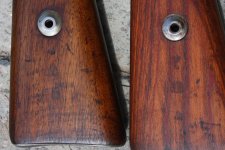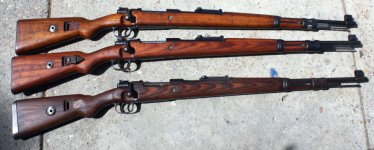Badger
Well-known member
Hello Simson/Mike/Bruce et al ………. 
As promised .....
I've removed picture copy restrictions, so go ahead and enlarge then right click pics to save for your research.
I've also left "descriptions" open for any of you to make comments.
1935 S/42G K98k Serial# 5137c
(Factory Reconditioned in 1940 by Mauser Werke AG, Oberndorf a/N)
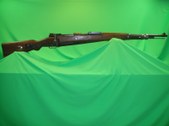 (Click PIC to Enlarge)
(Click PIC to Enlarge)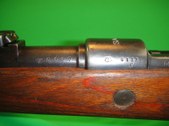
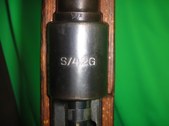 (Click PIC to Enlarge)
(Click PIC to Enlarge)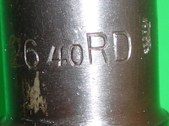
1935 S/42G Serial# 5137c (click here for 265 pic photo montage)http://imageevent.com/badgerdog/germanservicerifles/1935s42gk98kserial5137c
I also have in my collection the following Oberndorf "all matching" pieces:
I've linked the ones already done …
1934 "Banner" Mauser Serial # 92862http://imageevent.com/badgerdog/germanservicerifles/1934bannermauser
1936 S/42 (beautiful condition in walnut stock)
1937 S/42 (walnut)
1938 Code 42 (walnut)
1939 Code 42 Oberndorf K98k # 8089(i) (Luftwaffe Marked)http://imageevent.com/badgerdog/germanservicerifles/1939code42oberndorfk98k8089
1939 Code 42 Oberndorf K98k #602(z)http://imageevent.com/badgerdog/germanservicerifles/193942oberndorfk98k
1940 Code 42
1942 Code byf Oberndorf K98k # 9607(f)http://imageevent.com/badgerdog/germanservicerifles/1942byf42oberndorfk98k
1942 byf
1943 byf
1944 byf
1945 Mod 98 byf
If you'd like me to work on any of these next, let me know which ones and some kind of priority. I have to go out of the country this week on business, so it may take a week or so for me to get back to camera bench.
Regards,
Doug
As promised .....
I've removed picture copy restrictions, so go ahead and enlarge then right click pics to save for your research.
I've also left "descriptions" open for any of you to make comments.
1935 S/42G K98k Serial# 5137c
(Factory Reconditioned in 1940 by Mauser Werke AG, Oberndorf a/N)
1935 S/42G Serial# 5137c (click here for 265 pic photo montage)http://imageevent.com/badgerdog/germanservicerifles/1935s42gk98kserial5137c
I also have in my collection the following Oberndorf "all matching" pieces:
I've linked the ones already done …
1934 "Banner" Mauser Serial # 92862http://imageevent.com/badgerdog/germanservicerifles/1934bannermauser
1936 S/42 (beautiful condition in walnut stock)
1937 S/42 (walnut)
1938 Code 42 (walnut)
1939 Code 42 Oberndorf K98k # 8089(i) (Luftwaffe Marked)http://imageevent.com/badgerdog/germanservicerifles/1939code42oberndorfk98k8089
1939 Code 42 Oberndorf K98k #602(z)http://imageevent.com/badgerdog/germanservicerifles/193942oberndorfk98k
1940 Code 42
1942 Code byf Oberndorf K98k # 9607(f)http://imageevent.com/badgerdog/germanservicerifles/1942byf42oberndorfk98k
1942 byf
1943 byf
1944 byf
1945 Mod 98 byf
If you'd like me to work on any of these next, let me know which ones and some kind of priority. I have to go out of the country this week on business, so it may take a week or so for me to get back to camera bench.
Regards,
Doug
Last edited:

 I also appreciate the non-arrogant manner you guys exhibit in helping educate this old retired warrior. So, I hope that spirit of openness from my end is clear and understood by you and everyone else who provides me feedback.
I also appreciate the non-arrogant manner you guys exhibit in helping educate this old retired warrior. So, I hope that spirit of openness from my end is clear and understood by you and everyone else who provides me feedback. 





